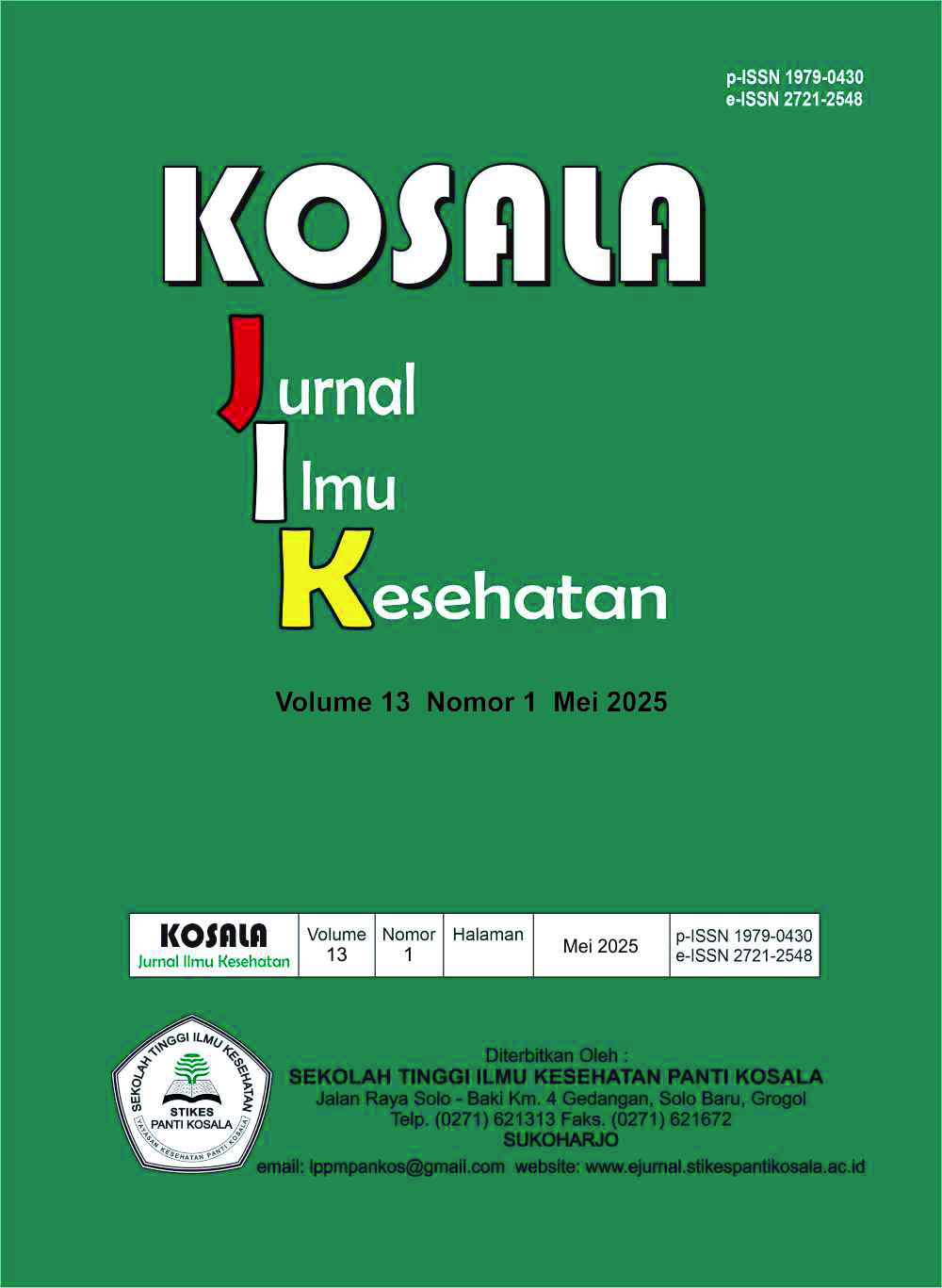EKSPLORASI PEMILIHAN CURAHAN HATI PADA REMAJA: ORANG TERDEKAT VS MEDIA SOSIAL
Main Article Content
Abstract
Dalam realitas penuh tekanan dan tantangan yang dihadapi remaja saat ini, curahan hati menjadi saluran penting bagi mereka untuk mengatasi berbagai perasaan dan pengalaman emosional. Tujuan penelitian ini untuk mengetahui hubungan pemilihan curahan hati remaja dengan penggunaan media sosial. Penelitian ini menggunakan metode penelitian kuantitatif survei dan dilakukan dengan menggunakan pendekatan cross-sectional dimana hanya dilakukan satu kali pengambilan data. Penelitian berlangsung di SMP N 1 dan SMP N 2 Sleman Yogyakarta pada bulan Juni-Agustus 2021 dengan jumlah sampel sebanyak 60 siswa. Variabel yang diteliti adalah karakteristik responden dan kecenderungan pilihan tempat curahan hati (curhat) baik keluarga/teman maupun media sosial. Data dikumpulkan dengan kuesioner terstruktur dan dianalisis secara diskriptif melalui narasi, gambar maupun tabel. Hasil penelitian memperlihatkan bahwa sebagian besar responden adalah perempuan, dengan pendidikan bapak dan ibu adalah SMA. Sebagian besar remaja memilih ibu dan teman sebagai teman curhat (masing-masing sebesar 40% dan 37%), namun demikian mereka juga masih memilih media sosial sebagai tempat curhat (60%). Pilihan favorit media sosial untuk curhat adalah WhatsApp (37%). Hasil analisis korelasi menunjukkan bahwa variabel kategori pemilihan curahan hati dan variabel penggunaan media sosial mempunyai tingkat korelasi sebesar 0,28 yang signifikan pada tingkat confidence interval 95%. Kesimpulan: kategori pemilihan curahan hati dengan penggunaan media berkorelasi, remaja tetap memilih media sosial sebagai sarana curahan hati, meskipun memiliki seseorang untuk curahan hati.
Kata kunci : curahan hati; ekspresi perasaan; media sosial; remaja
Adolescence is a developmental phase where there are many changes, including emotional changes. During adolescence there is also a peak in emotionality, so teenagers must receive attention from parents, teachers and a good environment so that their emotions can be controlled. Emotional development that is not well controlled can trigger emotional mental problems in adolescents. To realize adolescent mental health, it cannot be separated from the role of family and community in developing adolescent mental health. In principle, teenagers in the household environment can consult with their parents as friends to confide in. However, nowadays quite a few people are turning to confiding in social media and teenagers are the highest users of social media with a percentage of 75.50%. The use of social media makes it easier for teenagers to express or vent their feelings. To understand the relationship between the type of friends to share feelings with the use of social media as a tool to vent emotions in teenagers, this study was conducted using a quantitative survey method and a cross-sectional approach, where data were collected only once. This study was conducted at SMP N 1 and SMP N 2 Sleman, Yogyakarta, involving 60 students aged 14 and 15 years as samples. The result of the research show that as many as 40% of teenagers chose Mother as their friend to confide in and as many as 60% of teenagers used social media as a means to confide in or express their feelings. The results of the correlation analysis show that the variable whoever the friend confides in and the variable social media use have a correlation level of 0.28 which is significant at the 95% confidence interval level. These two variables have a significant relationship.
Keywords : adolescent , expression of feeling, social media
Downloads
Article Details

This work is licensed under a Creative Commons Attribution-NonCommercial 4.0 International License.
The copyright of the received article shall be assigned to the journal as the publisher of the journal. The intended copyright includes the right to publish the article in various forms (including reprints). The journal maintains the publishing rights to the published articles. Authors are permitted to disseminate published articles by sharing the link/DOI of the article at the journal. Authors are allowed to use their articles for any legal purposes deemed necessary without written permission from the journal with an acknowledgment of initial publication to this journal.
